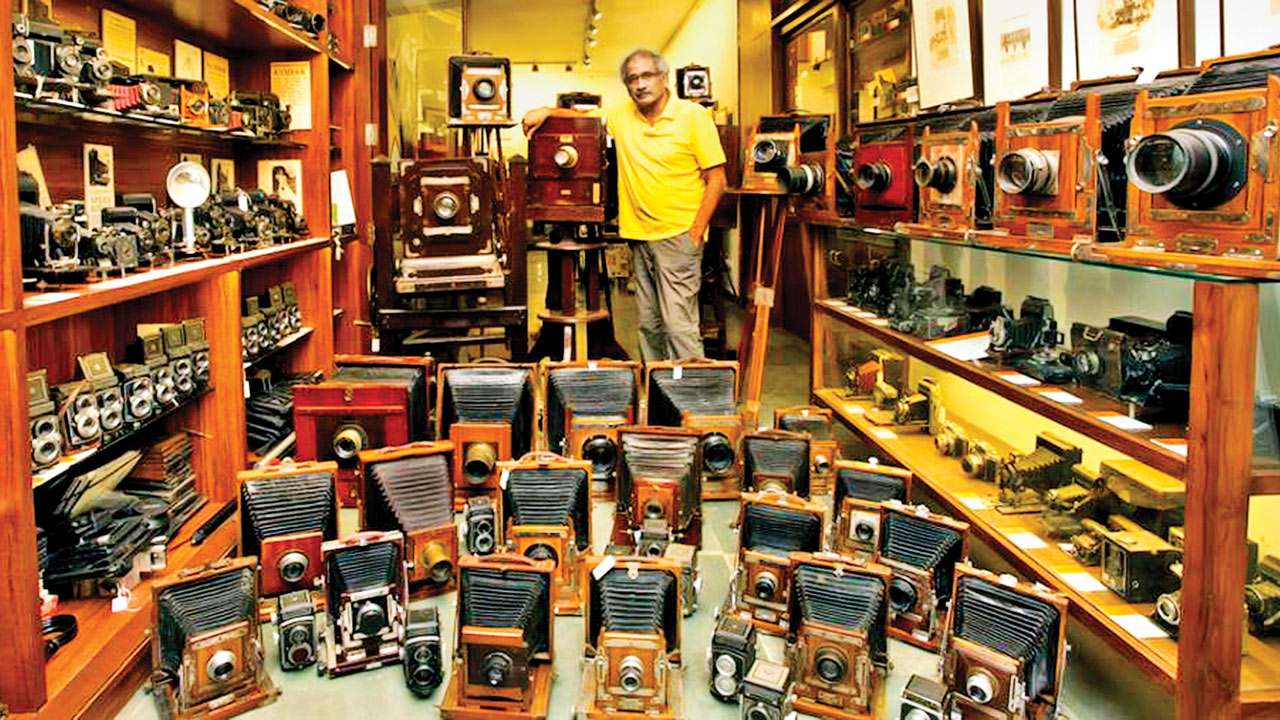
In a lane behind Gurugram's very posh Galleria Mall is a building that's being given finishing touches – workers are busy painting walls, shelves are being fixed and the newly planted vegetation in front has yet to take root. A vinyl placard on the facade announces – 'Museo Camera: Centre for the Photographic Arts – Opening Early 2019'.
This is photographer Aditya Arya's passion project, a home for his collection of 2,500-3,000 vintage cameras that now lie crammed in his 1,200 sqft basement. Construction started a little more than a year ago and should finish in a "month or two".
When completed, the 18,000 sqft museum – the first of its kind in southeast Asia, points out Arya – will have a permanent gallery exhibiting the Kulwant Roy collection, a rich archive of pre-Independence images, which Arya brought to the world's notice. Besides these will be a space for rotating exhibitions, an auditorium, a workshop area and library, a mock-up of a period studio with painted backdrops, darkrooms where photographers can replicate old analogue image-making processes, and a cafe. And, most important, a historical exposition of cameras starting with the earliest specimens dating to the 1860s.

(Arya with his studio camera)
"Photography is a unique art form that is always in a state of transition," says Arya, who started out in the Mumbai film industry – he was the still photographer for Jaane Bhi Do Yaaro – before turning to advertising. "These objects symbolise the transitory nature of this art."
Arya's hoard has specimens from several stages of this evolution – from bulky studio and box cameras, to smaller pocket and spy cameras, recent SLRs and even specialised ones used in the military and for newspaper printing. There are models from Kodak – a Model Pony Premo No.4 going back to the early years of the 20th century lies on the lower shelf – and other, little-known, long-dead manufacturers such as Graflex, Krasnogorsk (a Russian company that made movie cameras), Hanimex, Sanderson and Deerdorff. There's also the Sinar large format camera, a brand that Arya himself used to shoot brochure images for five-star hotels, which cost as much as Rs 15 lakh in the 1990s.
Besides these are flashbulbs, light metres and advertisements. "I have each and every Kodak ad from 1880 onwards," Arya, 58, says. These have been collected from all across the world. "I used to look at the kabaddi bazaars for what was available where, and if something was within my reach I would begin negotiations." Many a times, when the piece was too heavy to carry, he would sit up all night in his hotel room dismantling it, taking photographs of the inside before packing all the pieces in a small box, and reassembling it when he came back.
The world has moved on to the digital, but the "real magic" of photography, says Arya, lies in the print camera. "There is a certain physicality, a tactile experience – you dip your hands in chemical and see the image emerge in a darkroom – which makes them attractive to an increasing number of people today."
Arya also wants Museo Camera to become a "repository". "When a photographer dies, he leaves behind an invaluable bank of images of his time. This place will act as a repository for these." It's an idea that takes off from India Photo Archive, which Arya set up some years ago to "digitise, document, annotate, and preserve photographic archives in India". Arya has several thousand old negatives and glass plates, going back 50 to 100 years old, which now lie packed away in boxes in his office.
Clearly, the museum will give scale to these initiatives. Arya has been lucky thus far with the Haryana government allocating prime land for the museum for "virtually nothing". The architectural firm, Incubis, is working on the project for free. Upbeat, Arya concludes, "If your intent is good, there's somebody somewhere who will help you."